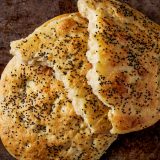On the drive into antakya after a short flight from Istanbul, it was immediately apparent that I was in an ancient place. In its day, Antakya was the third-largest city in the Roman empire—the silk and spice roads ran through it—and it is also the site of the first Christian church, founded by Peter, in a cave on Mount Starius. The souk, unlike the Grand Bazaar in Istanbul, is small and eclectic, with crowded shopping alleys converging on sun-dappled courtyards with fountains and cafés. Vendors offer tastes of shortbread-like cookies dipped in homemade marshmallow; a large horizontal spinning wheel is used to make kataifi dough (the liquid dough runs out of a dispenser onto the cooking wheel in concentric circles); a baker makes dozens of small lahmacun pizzas; one stall sells pancakes thicker than the traditional gozleme (a thin, light flatbread wrapped around a filling). And lunch was at a small restaurant where the specialty is tepsi kebabı, a large round of cooked minced meat with herbs and spices that is served with pide.
Turkish pide, known as pide ekmeği, is my all-time favorite flatbread because it is not really flat. It is two to three inches high with a dimpled top, and the bread itself is quite soft with good chew. It’s as if a Pullman loaf married a piadina. You can tear it into pieces and use it to scoop up food or simply eat it out of hand. Marvelous.
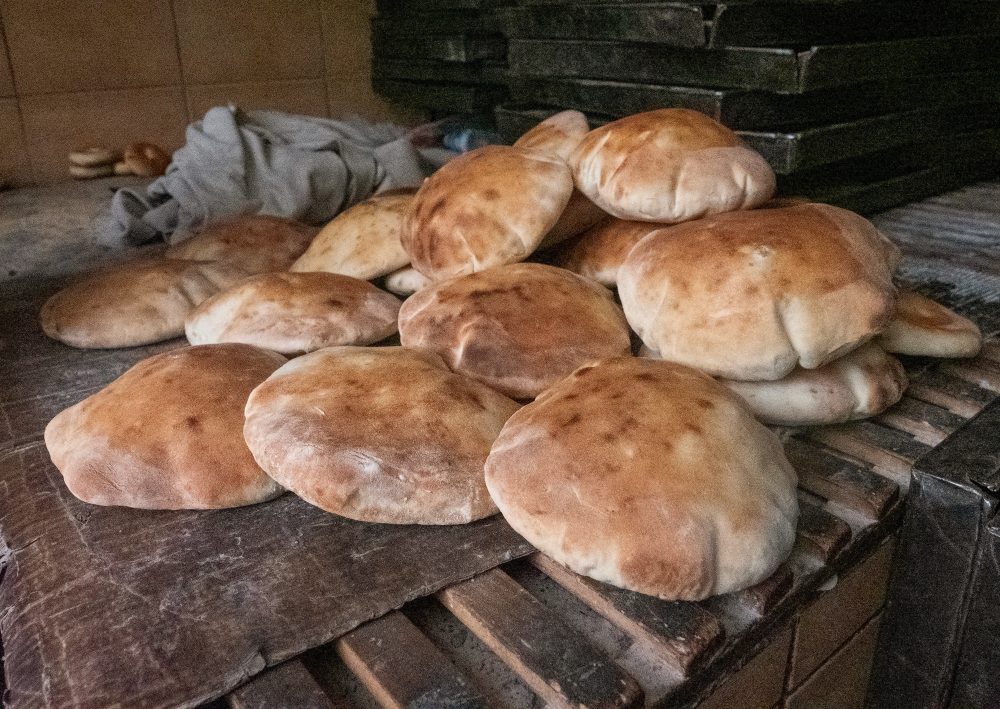
The best pide in Antakya was baked at the Kirkici Bakery. But first, a word about the 2023 earthquake. The bakery is now closed, and according to Hadice Nalçabasmaz, who grew up in town and served as my guide, the center of Antakya is still in ruins, with little sign of returning life. Some of the shops in the old bazaar are now open, but most residents have returned to their villages while commuting to the city to rebuild livelihoods. Many fortunate residents now live in Arsuz, on the Mediterranean coast, where they have summer houses. But many people have no place to go and are still living in prefabricated housing units resembling shipping containers.
But in early 2022, Antakya was still full of life, so let me introduce you to the people who worked at Kirkici: The boss was Nurettin, the head baker was Necim, and the friendliest of the lot was Ramazan, who sold loaves through a window onto the street and whose radiant smile was evidence that this bakery was the center of his universe, and happily so. The rounds of dough were shaped and put onto trays. Necim slid them onto his paddle, four at a time, brushing the tops with egg before they went into the wood-fired oven.
The trick with this bread is texture. The dough and the bread must be soft, which means a high hydration rate (weight of the water divided by weight of the flour) of just under 90 percent. We also found that making a sponge (1 cup flour and water, plus honey and yeast) and letting it sit at room temperature for just 30 minutes provided better flavor and better texture. (A good bread-baking tip is to combine 1 cup each of flour and water and just ½ teaspoon of rapid-rise yeast, mix it in a bowl, and let it sit on the counter overnight. This gives you better flavor and improved handling; the dough will be easier to work with. The next day, add the balance of the ingredients and proceed with the recipe.) Before baking, the pide is imprinted with dimples using fingertips and then baked in a 475°F oven for less than 20 minutes.
Founded in 300 B.C.E. by one of Alexander’s generals, Antakya has seen a lot of history and a lot of baking. We look forward to the day when the city is rebuilt and Kirkici reopens to continue its long tradition of making the best pide in the world.
Turkish Pide Bread
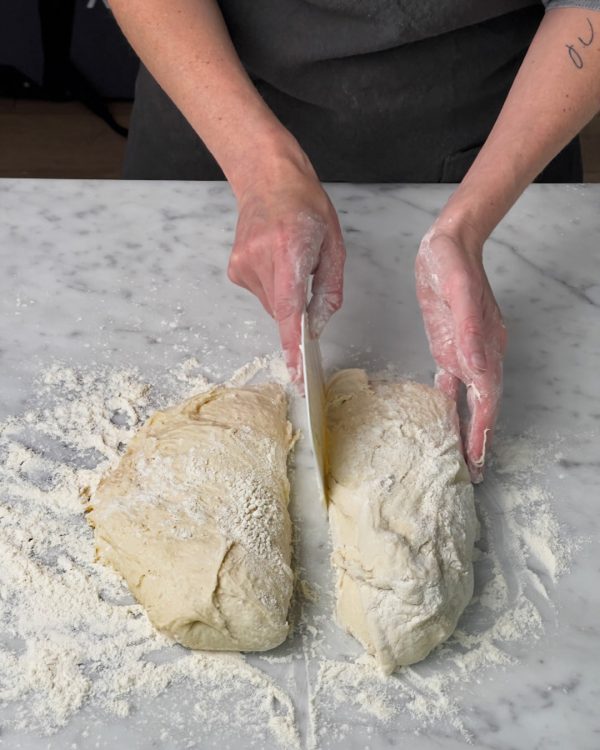
1. When the bread dough has doubled, generously dust the counter with flour, then turn the dough out onto it; divide the dough in half.
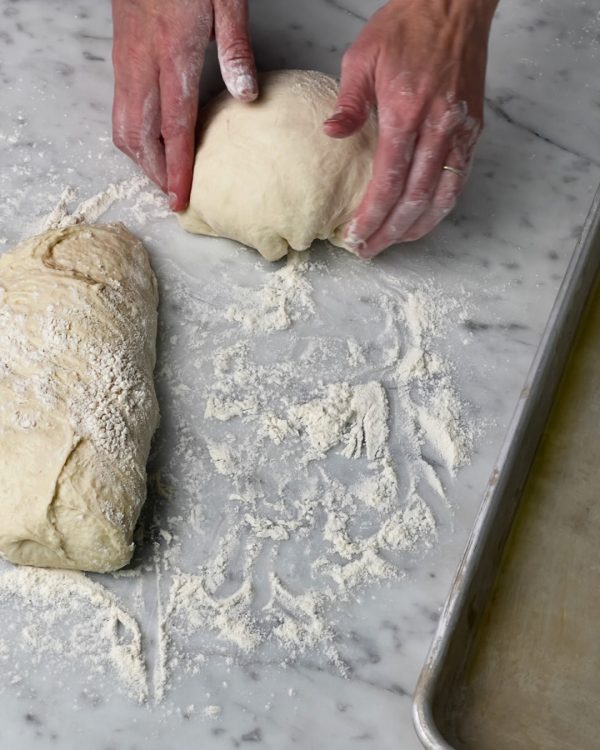
2. Shape each dough portion into a smooth ball. Set a dough ball on each side of the prepared baking sheet, cover with a towel and let rest for 15 minutes.
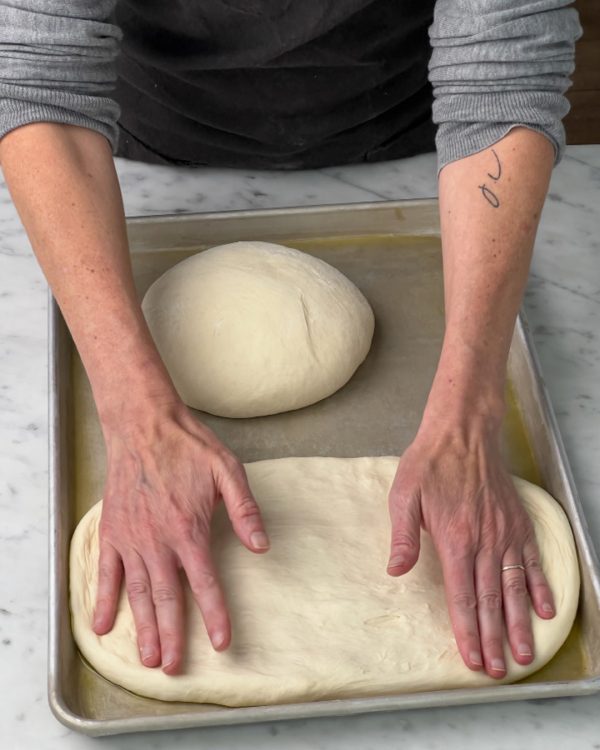
3. Using your hands, gently pat and flatten each dough portion into a 10-by-7-inch oval, taking care not to press out all of the air.
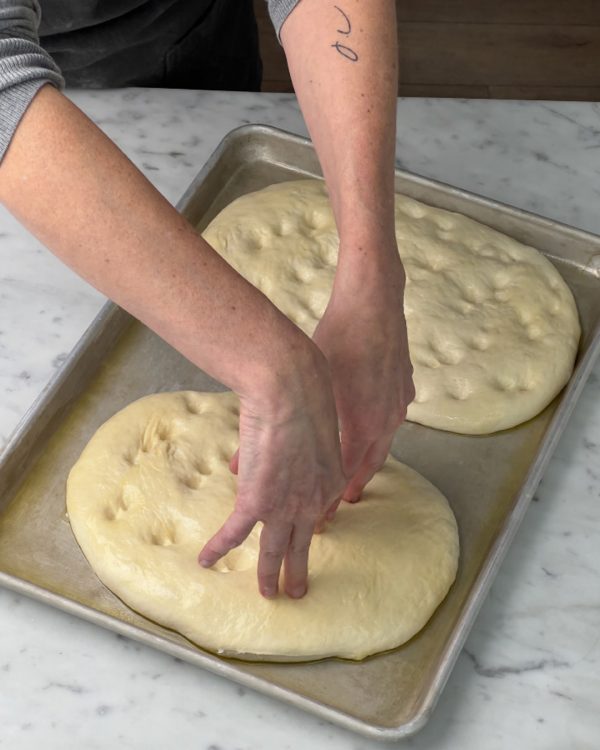
4. Imprint a series of dimples, spaced about 1 inch apart, into the oval by firmly pressing your fingertips straight down into the dough.
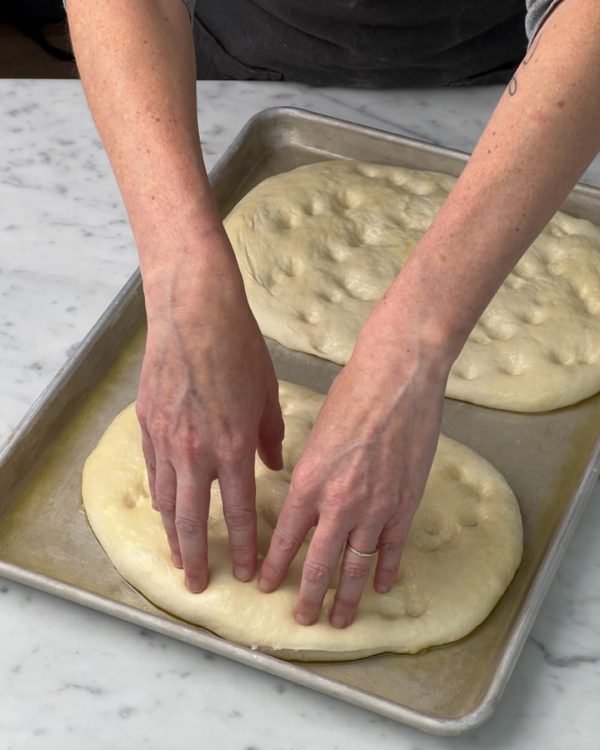
5. Again using your fingertips, imprint another series of dimples, also spaced about 1 inch apart, perpendicular to the first set, creating a rough grid pattern.
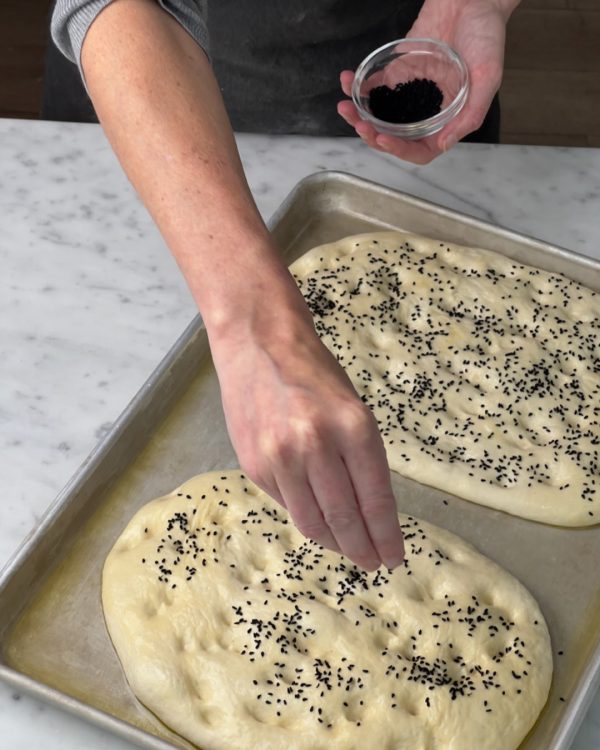
6. Sprinkle the ovals with the nigella seeds. Bake until light golden brown and well risen. Cool for 5 minutes on the baking sheet, then transfer to a wire rack.
A so-called preferment is an early step in some bread recipes in which a mixture of flour, water and yeast ferments before being added to dough. There are various styles, but all help leaven, enhance gluten structure and provide tangy, complex flavor. Most take 12 to 24 hours to mature, as the yeast consumes starches, producing carbon dioxide for leavening and developing flavor compounds.
A sponge is the fastest form of preferment, ready in as little as 30 minutes. But does it actually make a difference? To test, we made our Turkish pide with and without a sponge. We also tested timing, allowing the sponge to ferment for 30 minutes, one hour and two hours. The breads with the sponge were better, chewier, with a subtle but noticeable depth of flavor. The doughs themselves also were less sticky and easier to shape. As for timing, we found two hours to be too long. Anything between 30 minutes and one hour was perfect.
As a general rule, to incorporate quick-fermenting sponges into bread recipes, use about 25 percent of the total flour from your recipe to make the sponge. Mix this portion of flour with an equal amount of warm water by volume and the yeast specified in the recipe. We also like to add 2 teaspoons honey to jump-start yeast activity. When adding the sponge to the rest of the dough ingredients, subtract from them the amount of water and sweetener already added to the sponge.
